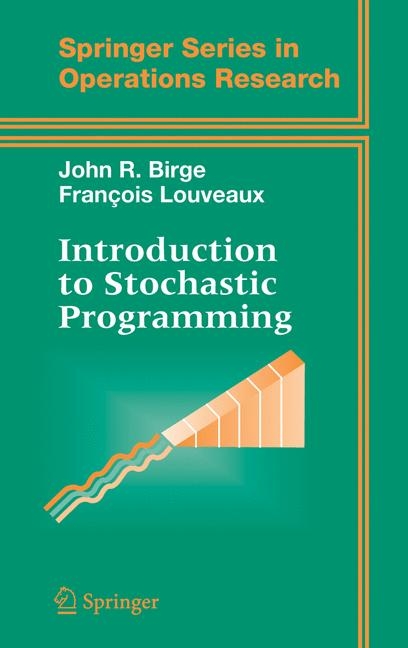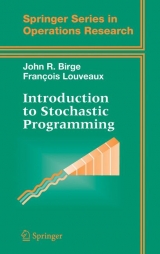Introduction to Stochastic Programming
Seiten
1997
|
1997. Corr. 2nd Printing ed.
Springer-Verlag New York Inc.
9780387982175 (ISBN)
Springer-Verlag New York Inc.
9780387982175 (ISBN)
- Titel erscheint in neuer Auflage
- Artikel merken
Zu diesem Artikel existiert eine Nachauflage
Presents an overview of the main themes and methods in stochastic programming. This title introduces worked examples of stochastic programming and demonstrates how a stochastic model is formally built. It develops the properties of stochastic programs and the basic solution techniques used to solve them.
This rapidly developing field encompasses many disciplines including operations research, mathematics, and probability. Conversely, it is being applied in a wide variety of subjects ranging from agriculture to financial planning and from industrial engineering to computer networks. This textbook provides a first course in stochastic programming suitable for students with a basic knowledge of linear programming, elementary analysis, and probability. The authors present a broad overview of the main themes and methods of the subject, thus helping students develop an intuition for how to model uncertainty into mathematical problems, what uncertainty changes bring to the decision process, and what techniques help to manage uncertainty in solving the problems. The early chapters introduce some worked examples of stochastic programming, demonstrate how a stochastic model is formally built, develop the properties of stochastic programs and the basic solution techniques used to solve them. The book then goes on to cover approximation and sampling techniques and is rounded off by an in-depth case study. A well-paced and wide-ranging introduction to this subject.
This rapidly developing field encompasses many disciplines including operations research, mathematics, and probability. Conversely, it is being applied in a wide variety of subjects ranging from agriculture to financial planning and from industrial engineering to computer networks. This textbook provides a first course in stochastic programming suitable for students with a basic knowledge of linear programming, elementary analysis, and probability. The authors present a broad overview of the main themes and methods of the subject, thus helping students develop an intuition for how to model uncertainty into mathematical problems, what uncertainty changes bring to the decision process, and what techniques help to manage uncertainty in solving the problems. The early chapters introduce some worked examples of stochastic programming, demonstrate how a stochastic model is formally built, develop the properties of stochastic programs and the basic solution techniques used to solve them. The book then goes on to cover approximation and sampling techniques and is rounded off by an in-depth case study. A well-paced and wide-ranging introduction to this subject.
| Erscheint lt. Verlag | 1.3.2000 |
|---|---|
| Reihe/Serie | Springer Series in Operations Research |
| Zusatzinfo | 1, black & white illustrations |
| Verlagsort | New York, NY |
| Sprache | englisch |
| Maße | 156 x 234 mm |
| Gewicht | 802 g |
| Einbandart | gebunden |
| Themenwelt | Mathematik / Informatik ► Mathematik ► Angewandte Mathematik |
| Mathematik / Informatik ► Mathematik ► Wahrscheinlichkeit / Kombinatorik | |
| Naturwissenschaften ► Physik / Astronomie | |
| Wirtschaft ► Allgemeines / Lexika | |
| Wirtschaft ► Betriebswirtschaft / Management | |
| ISBN-13 | 9780387982175 / 9780387982175 |
| Zustand | Neuware |
| Informationen gemäß Produktsicherheitsverordnung (GPSR) | |
| Haben Sie eine Frage zum Produkt? |
Mehr entdecken
aus dem Bereich
aus dem Bereich
für Ingenieure und Naturwissenschaftler
Buch | Softcover (2024)
Springer Vieweg (Verlag)
CHF 48,95
Buch | Softcover (2025)
Springer Vieweg (Verlag)
CHF 62,95
Buch | Softcover (2025)
Springer Fachmedien Wiesbaden (Verlag)
CHF 69,95





